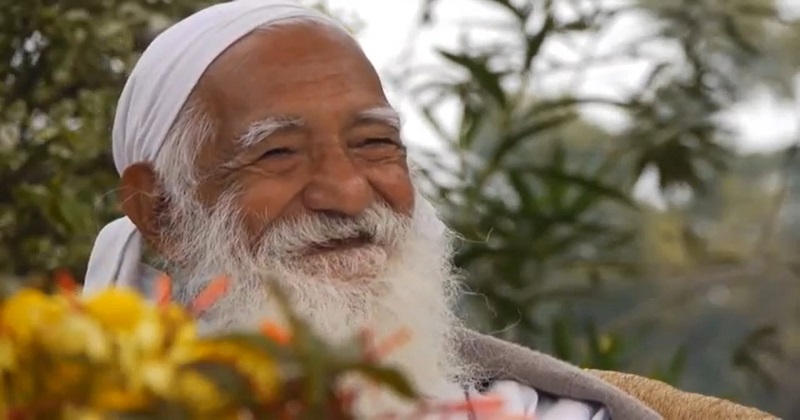
The earth has warmed by nearly 1 degree Celsius since the widespread use of fossil fuels like coal and oil in the early 18th century. Global warming has resulted as a result of this. The changing climate system is displacing millions of people and destroying wildlife, as the ghost of global warming haunts us. This is a warning sign for our shared natural heritage. This indiscriminate exploitation of nature has precipitated a global crisis. It is the most pressing environmental issue of the twenty-first century, prompting the emergence of environmental activism.
The coming together of various groups of individuals and organisations working to address environmental concerns is referred to as environmental activism. Today, we will discuss environmental activists who have taken a different approach to India’s climate movement.

1. Sunderlal Bahuguna
Sunderlal Bahuguna was an Indian environmentalist and a prominent leader of the Chipko movement. He campaigned for the preservation of Himalayan forests. He first fought as a member of the Chipko movement in 1970 and later led the anti-Tehri Dam movement from 1980 to early 2004. He was one of India’s first environmentalists.
He worked to improve the plight of hill people, primarily working women, as an environmental activist and ardent defender of the Himalayan people and India’s rivers. He was also involved in social movements and, previously, the fight against casteist discrimination. Inspired by Gandhi, he walked over 4700 kilometres through the Himalayan forests and hills. The Government of India bestowed the Padma Shri award on him, but he declined.

2. Anupam Mishra
Anupam Mishra was a well-known Gandhian, journalist, author, conservationist, and environmentalist. He was working to raise public awareness about environmental protection and attract the attention of governments at a time when the country had no environmental protection department. His workplace was in drought-stricken Alwar, where he began water conservation work that was seen and appreciated around the world. Anupam Mishra used to travel through India’s villages, educating people on traditional water-saving and conservation methods. He was pivotal in reviving Alwar’s dried-up Arvari River.
Similarly, he has contributed significantly to the revitalization of traditional water sources in Uttarakhand and Lapodia, Rajasthan. His books, ‘Aaj Bhi Khare Hai Talab’ and ‘Rajat Drops of Rajasthan,’ are considered water conservation landmarks. Apart from that, he explained in the country and abroad how people in various parts of India, understanding their geographical location, availability of resources, and needs, adopt effective water conservation methods. He has also received the country’s highest environmental award, the ‘Indira Gandhi Environment Award.’

3. Sunita Narayan
Sunita Narayan is an Indian environmentalist. Currently, he is the Director General of the Center for Science and Environment, as well as the editor of the biweekly magazine Down to Earth. In the development of paradigms for community-based water management, she has worked on rainwater harvesting and its policy implications.
She has spent decades raising awareness about fundamental environmental and societal issues. She has worked on water issues, nature and environmental issues, and other issues for the betterment of society. She advocates for solutions to develop a coexistence agenda with local communities in order to share the benefits of conservation and secure a future.
In 2005, she chaired the Tiger Task Force, formed by the Prime Minister in response to the loss of tigers in Sariska, to develop a conservation action plan for the country. Aside from environmental issues, she discusses Naxalism, political corruption, tiger and tree conservation, and other social issues. The Government of India awarded her the Padma Shri in the same year.

4. Marimuthu Yoganathan
Marimuthu Yoganathan is commonly referred to as ‘The Tree Man of India’. He’s also known as the ‘Green Warrior.’ Yoganathan is an environmental activist from India. He works as a bus conductor for the Tamil Nadu State Transport Corporation and is well-known for his environmental activism. He was also recognised by Timberland, a US-based footwear company, for his outstanding work in planting approximately 3 lakh saplings across the state. He also made the students aware of the importance of environmental protection.
Yoganathan has visited approximately 3,743 universities, colleges, schools, and industries, as well as taken environmental awareness classes. Yoganathan was also recognised for his personal project, ‘Uirwaza Oru Marn’. Students have been taught to plant a sapling on their birthdays as part of this programme. The Vice President of India honoured him with the ‘Eco Warrior’ award.

5. Rajendra Singh ‘Jalpurush’
Rajendra Singh is an environmentalist and water conservationist from India. He is referred to as the ‘Waterman of India.’ His workplace was Alwar, Rajasthan, where he works to re-establish the dried-up rivers. They are currently travelling across the country to save rivers. water collection and management

Post Your Comments